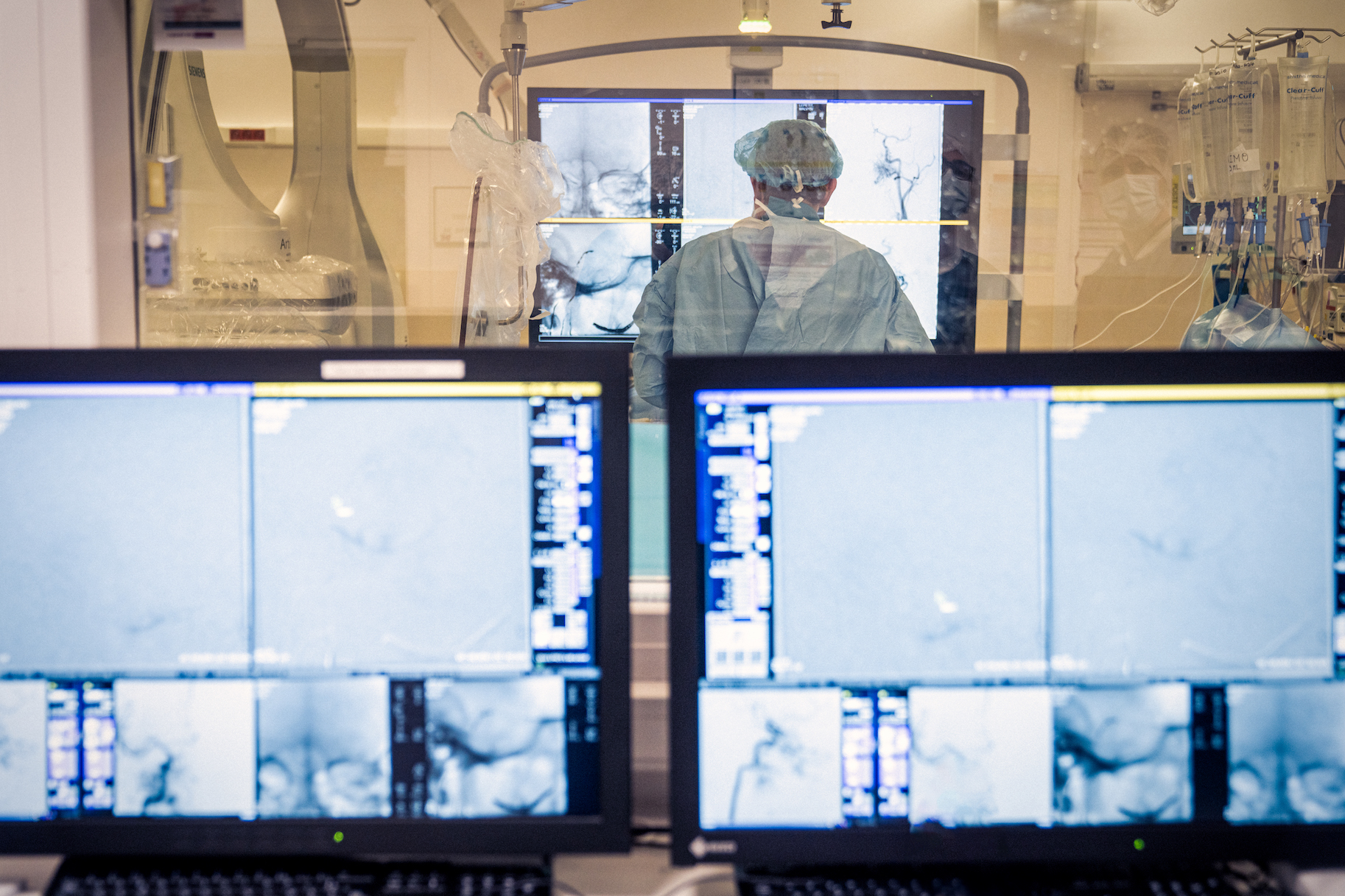
A programme to promote better lifelong health
Launched in the autumn of 2021 as part of the France 2030 programme, the national Digital Health Acceleration Strategy aims to encourage the transition to more preventive, predictive and personalised medicine, and foster the emergence of a robust digital health ecosystem in France.
This strategy includes the Priority Research Programme and Facilities (Programme et équipements prioritaires de recherche – PEPR), also announced in October 2021. The French National Institute of Health and Medical Research (INSERM) and Inria (where nearly 30% of the project teams work on topics directly related to life and health sciences) have naturally been asked to lead this project, whose purpose is to make scientific breakthroughs and develop the disruptive technologies required to develop the prevention and healthcare system between now and 2030.
"The aim of this PEPR is to focus on what we consider to be key aspects for citizens' quality of life", explains Philippe Gesnouin, Director of Inria's Digital Health Programme and coordinator of the PEPR for the Institute.
Multi-scale models, a common thread of the PEPR
Inria and INSERM have jointly decided that the programme will revolve around the development of multi-scale models for digital health, a field in which French research is ahead of the game.
"Multi-scale means being able to predict things, data and behaviour over several scales of time (i.e. variable time frames ranging from microseconds to several decades) and space (i.e. from cells to organs, and even taking account of the patient's lifestyle and environment", explains Hugues Berry, Inria's Deputy Scientific Director in charge of the "Digital Health and Biology" field and co-pilot of the programme for the Institute.
The ambition, by 2030, is to develop techniques and methods for developing realistic multi-scale digital twins. "For example, we are currently able to predict the progression of a patient's pathology over a horizon of several minutes after a medical imaging examination, and our next objective is to be able to do this over several years", adds Hugues Berry.
In addition to exploiting the currently available data, the focus will also be on developing new multi-scale data acquisition methods (sensors, imaging) and new digital approaches (including artificial intelligence, mathematical modelling, digital representation, etc.) in order to ensure the effective exploitation of data, but also to guarantee the security and confidentiality of personal information, and to make sure that the social, political, ethical and legal contexts are taken into account in their development.
Four priority programmes for 17 lines of research
This programme targets two fields of application in particular: cardiovascular disease and neurological disorders, for which lifelong follow-ups and data collection over extensive periods are already available, and for which interventions at early stages or for preventive purposes are relevant. The research activities have been divided into 17 scientific themes, revolving around four priority programmes:
- developing new digital methods for the multi-scale analysis of healthcare data;
- overcoming the technical and socio-demographic challenges of using personalised, multi-scale health data;
- developing applications in the cardiovascular field;
- and developing applications in the field of neuroscience.
A second component of the PEPR will be devoted to funding new projects (corresponding to around 45% of the budget) in the form of calls for projects and/or calls for expressions of interest, in line with the 17 projects previously launched and the prospects for developments in the field
We don't want to spread ourselves too thinly, but we are giving ourselves the opportunity to obtain additional resources in order to go further.
Philippe Gesnouin
Strengthening links within the scientific community
Inria and INSERM have therefore naturally joined forces with the CEA and CNRS to refine the programme together and identify the top laboratories in the PEPR priority fields. The aim is to select fifty experts who are considered to be at the cutting edge of these fields, and to task them with putting together the workstreams.
The idea is to create large, multi-cooperative projects that enable the various players in the field to work together in synergy, rather than in competition with each other, as is generally the case.
Hugues Berry
All in all, the partners involved in these initiatives represent a major coordinated research endeavour, carried out on more than 20 campuses and research sites throughout France, with teams from more than 20 universities and engineering schools and four national research organisations, supported by a large number of national hospital and clinical networks. The Digital Health PEPR is also collaborating with other PEPRs, such as the Cybersecurity PEPR in the health data management field.
"The ultimate aim is to be able to provide building blocks, deliverables that can be easily understood and transmitted to third parties, and used by healthcare professionals and the industry to develop new digital devices or new industrial products more quickly. We also hope that our results will lead to the launch of new research projects on a European scale", concludes Philippe Gesnouin.